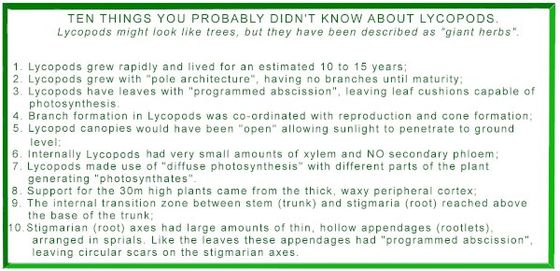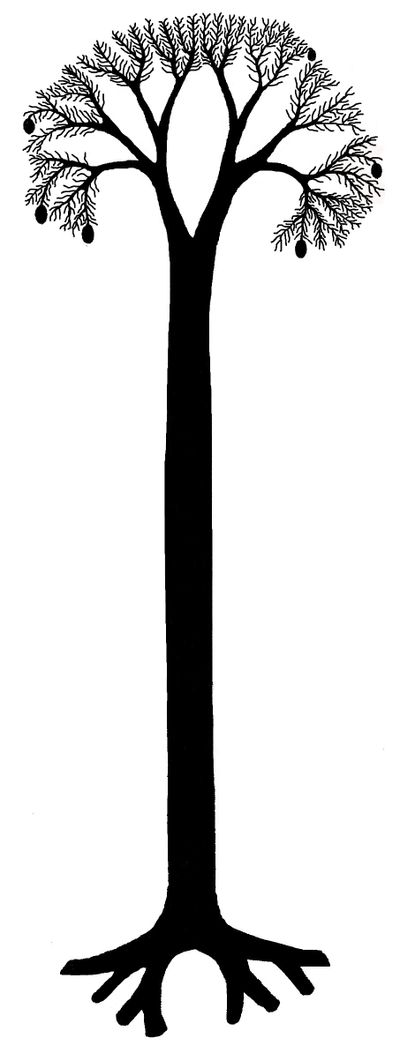Lepidodendron
Recording, conserving and promoting the landscape and rocks of the Sheffield region
Lepidodendron
Introduction
SAGT chose the fossil Lepidodendron
(the so-called Scale Tree) as its motif because of its extensive occurrence in the local Coal Measure rocks and because it represents a significant episode in the colonisation of land by a remarkable group of plants.
Lepidodendron
was a lycopod, not an angiosperm - like an oak tree nor a gymnosperm - like a conifer tree. (See Fig. 2). Those modern plants evolved much later than the lycopods and are very familiar to us, but they have very little in common with these Carboniferous plants whose internal structure, roots, reproductive system and even their leaves evolved in a different way from modern trees. This means that when we describe the features of lycopods we should use a different set of names for what look like familiar features. [See Lepidodendron
Morphology button above.]
The first plants on Earth evolved in the oceans and then, much later, colonised the land. By about 470 million years ago terrestrial green plants, like liverworts and mosses, probably only a few centimetres tall, were producing the first spores in the fossil record. These were simple forms with basic adaptations to land dwelling, but it was from these early forms that taller land plants evolved.
The adaptions required for any plant to evolve successfully from an aquatic, marine environment to a terrestrial one are:
- A waterproof surface cuticle
- Stoma (breathing holes) and internal channels to allow gas exchange, but control water loss
- A root system to obtain water and nutrients
- A vascular (plumbing) system to conduct water to all parts of the plant
- A reproductive system that worked in air, not seawater, and conserved water, especially the evolution of spores with durable walls
- An internal support system to allow the plant to become taller to compete for more sunlight


Fig 1. Lepidodendron
drawing
©A. Hunter
Lycopod Classification
The botanical group to which lepidodendron belonged is called Lycopsida which, during the Late Palaeozoic, was mainly represented by four major taxononic Orders:
Lepidodendrales (Devonian to Permian): large arborescent (tree-like) forms with stigmarian rooting sustems. Families: Lepidodendraceae, Diaphorodendraceae and Sigillariaceae
Isoetales (upper Devonian to recent): smaller, woody forms with cormose rooting structures. Families: Isoetaceae, Chaloneriaceae
Lycopodiales (Late Carboniferous to Recent): herbaceous forms. Family: Lycopodiaceae
Selaginellales (late Carboniferous to Recent): Herbaceous forms with a creeping to upright growth pattern. Family: Selaginellaceae.
email: sageologytrust@gmail.com
Copyright: Sheffield Area Geology Trust. Registered Charity No. 1133465, England
